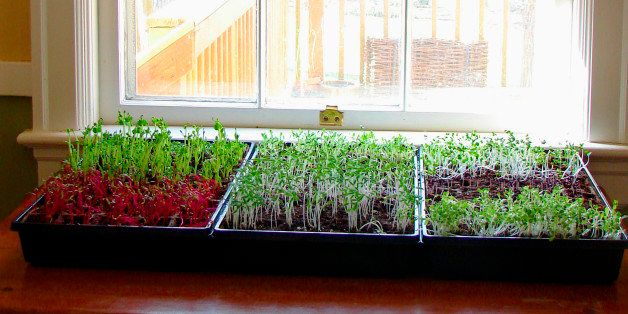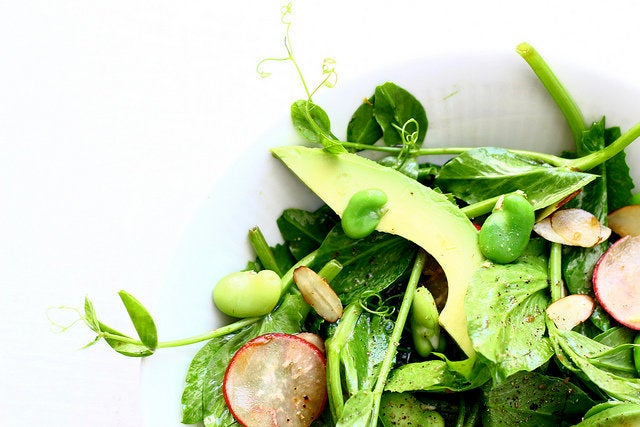
For someone who has never grown a thing, planting a seed into soil feels absolutely intimidating. It's an incredibly simple act and it happens in the natural world every second, yet we've gotten to a place in our modern world where growing things feels very foreign. It's time we change that. Let's do that with microgreens.
Microgreens are basically just younger versions of what we call baby greens. They're budding versions of arugula, Swiss chard, mustard, beetroot and other salad greens. They've become trendy in upscale dining, and there's a reason why: they are delicious. The tiny leaves are tender and full of flavor -- and they're packed full of nutrition. They make wonderful additions to savory dishes like eggs, sandwiches and salmon filets.
There is one downfall to microgreens: they're incredibly expensive to buy. That's why you have to grow your own. You only have to keep the plants alive for two weeks before you can harvest them. So even if you have a brown thumb, you've got this. You don't need a yard to do it. Taste's Executive Editor Kristen Aiken grows some on her windowsill in her NYC apartment. Look:
So now for the nitty gritty of it: how to get it done. First, you'll need some seeds. You can find those at your local plant store or order some online. Seed Savers Exchange has a great selection as does the Hudson Valley Seed Libary.
Next, you'll need a small container with good ventilation at the bottom -- you can use anything from clay pots to the plastic containers your baby spinach leaves were stored in -- and potting soil. Fill your container with about two inches of moistened potting soil and flatten it. Scatter the seeds on top, gently push them into the soil and lightly dust with about 1/8-inch layer of soil. Delicately water them -- we like to use a spray bottle to give them a soft mist. Keep them by a window that gets a lot of light, or place them under a grow light, and watch them grow. It's that simple. Some plants sprout in as few as two days.
If that still feels scary to you, Chef Steps has started a free, four-part video series to walk you through it. You have no excuse not to do this. So get to it, start gardening.
